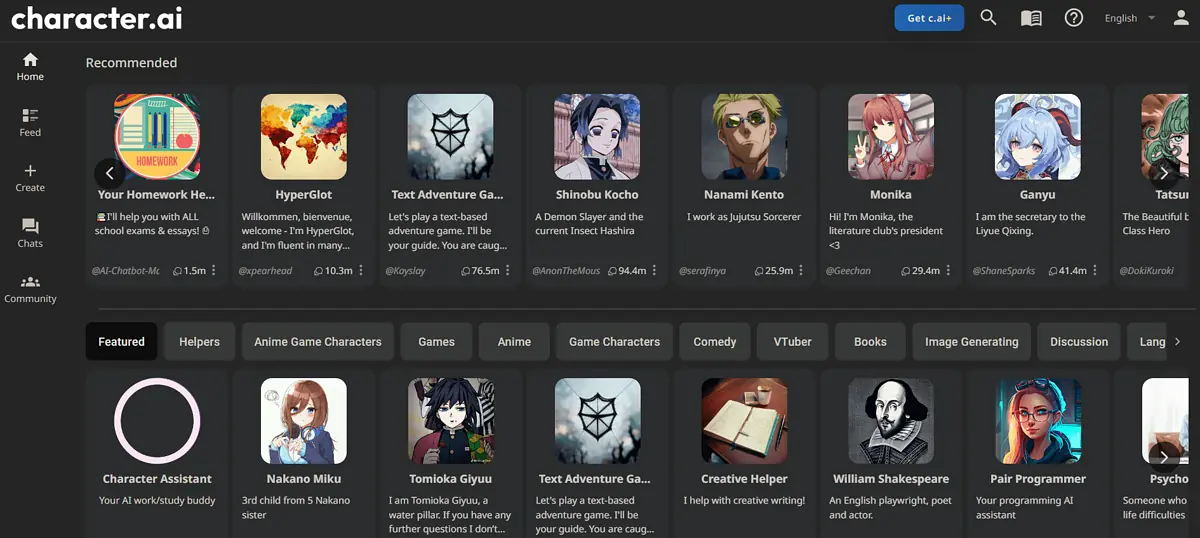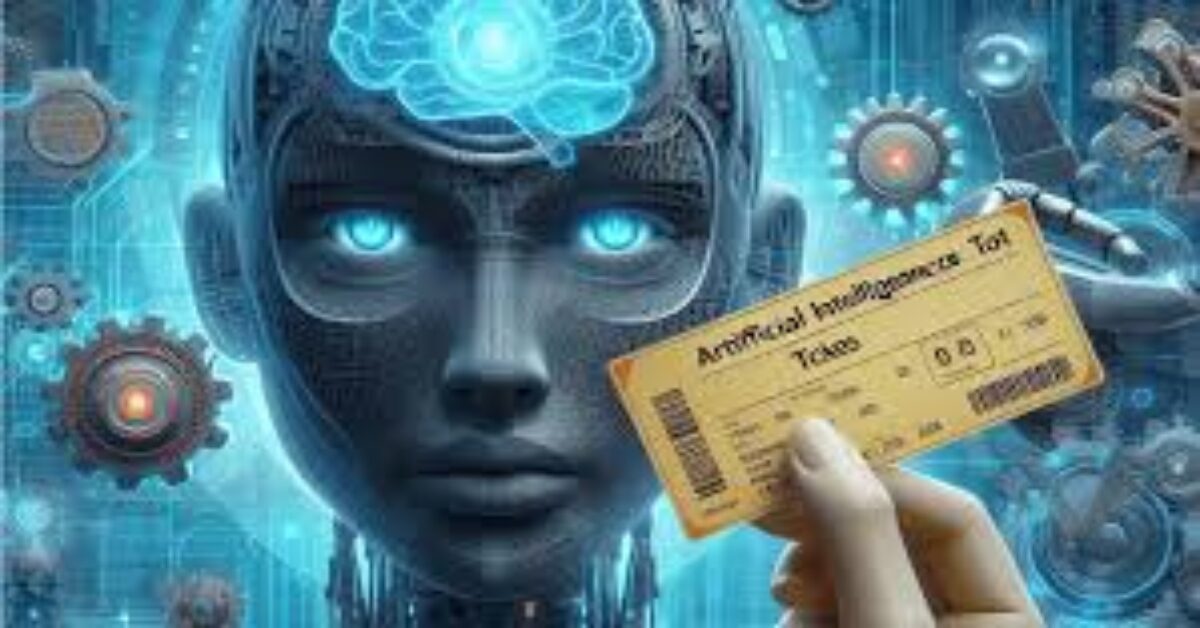Blog
Discovering the best Janitor AI Alternatives in 2024?

Search for Janitor AI alternatives? You’re in the right spot!
What is Janitor AI?
Janitor AI is a chatbot that suggests more than 200,000 AI characters. Separated into 52+ categories, you can discover any character a logic can (and can’t) imagine. It also keeps NSFW characters.
Users can make public characters or create them personally. Like many identical platforms, I’ll say later, Janitor AI needs no technical knowledge, making it beginner-familiar.
How to Choose the Best Janitor AI Alternatives?
To pick the best Janitor AI alternatives, you must specify if you like an answer with identical or different characteristics. There are many favors with identical interfaces and characteristics, but some Janitor AI alternatives offer a few spares that Janitor AI lacks, so I’ll concentrate on them.
Maybe you don’t like to spend money on a Janitor AI account, so you examine for an equivalent some Janitor AI alternatives with a free trial. Or you don’t want the interface and find it difficult to concentrate on your characters and chat with them.
Best 5 Janitor AI Alternatives
These are the best Janitor AI Alternatives I came across.
1. SpicyChat AI

If you’re used to the Janitor AI interface, you won’t have issues getting used to SpicyChat AI. It shows an identical user experience and output quality. But it is perfect Janitor AI Alternatives.
To use it, you’ll require a free account. Recall that the waiting time for free accounts can differ, and you’ll have to subscribe to ignore the queue. This is a significant distinction, as Janitor AI doesn’t have this waiting tool.
A subscription program of $5 per month grants you priority entrance to SpicyChat AI.
As the name recommends, the venue is NSFW-friendly. Yet, you can only select among 48,000 available characters (Janitor AI has 210,000).
The character design technique is almost similar, with the distinction that it’s just faster on SpicyChat AI. This also signifies you have fewer choices to describe your character’s profiles.
Getting help using this venue is comfortable. Everything is well established on their Documents page. You’ll possibly require this only if you like to make and squeeze your characters since using the premade ones is specific.
2. Tavern AI

Tavern AI is a completely free and open-source frontend for AI chatbots.
This indicates you only obtain the interface you interact with but always require a backend. I’m having it at the top of the list because of the opportunity behind this!
You can unite famous examples like Chat-GPT or KoboldAI from the same interface. You can even squeeze the evolved settings to get the expected output.
The most important benefit of Tavern AI is that it contains tools to bypass some restrictions on famous AI models. OpenAI doesn’t keep NSFW content by default. Nevertheless, while using Tavern AI and OpenAI API, you’ll see it functions like a charm!
Analogized to Janitor AI, it needs a bit more bother to set it up, as you must run it on your PC. The bonus is fresh and otherwise stopped content directly from the best AI models.
If you’re tired of the lifelessness of the Janitor AI character’s output, this can be a significant method to go. You can even squeeze the advanced settings or change the backend ideal if you get bored.
3. Replika

Replika is the most optimized Janitor AI alternative on this list. The entire experience is very advanced and doesn’t remind you of the traditional interfaces you can discover in other AI chatbots.
Unlike Janitor AI, Replika permits you to customize the graphic appearance of your character.
The experience of using Replika is gamified and catchy. It’s safe to say it’s one of the most attractive Janitor AI alternatives.
After you make the characters, you can execute different conversational activities. You can also ‘increase’ their skillfulness in a special area. Again, no technical experience is required.
You’re on your own when you make a character in Janitor AI. With Replika, the AI co-creates the character with you, optimizing the experience.
Using Replika is supposed like playing modern-day Sims in a little different context. Whether you like to role-play, rehearse connection skillfulness, or discuss, it’ll get the job accomplished.

Character.ai is one of the most famous AI chatbots with advanced assembly characteristics. It is one of the best janitor AI Alternatives.
These are mostly introduced towards forum relations. This varies from what you can discover in Janitor AI, such as comments on characters and public chat records.
Unlike Janitor AI, this solution presents some advanced techniques for interactions. These contain premade commands, which can be useful if you’re after-business AI characters.
Some of the most familiar varieties for characters are games, anime, and helpers. The last one is thrilling as it can help you improve productivity.
Another thing to note is that Character.ai supports many languages, while Janitor AI is only created for interactions in English.
The user interface is decently managed, and for any problems one might experience, there’s an in-depth guide available. This creates a fine solution for beginners using the advanced characteristics noted earlier.
There are three different commodities you should be aware of:
- Character
- Room
- Persona
Characters guide to AI characters featured on the outlets we’re discussing today. Rooms can contain multiple characters (yours or created by others). Persona represents you as the user, and you can have different ones.
5. Candy.ai

Candy.ai is a famous Janitor AI alternatives for NSFW content. The venue aims to help you make your greatest AI girlfriend or boyfriend.
You can also interact with premade characters, either practical or anime. A superior feature is that you can get voice messages mailed by characters AI.
This solution has one of the most useful AI image generation integrations. While interacting with any of the characters, you can request them to send a photo of themselves. Recall, these photos are context-developed, which makes the experience immersive.
The venue itself is structured as an AI-generated Tinder. The photos, descriptions, and chats are completely generated, but it doesn’t appear so on the first look. Further, both male and female characters are available.
You are required to register for an account to use any of these characteristics.
After some messages or generated images, you’ll be requested to subscribe to a paid plan. In other words, don’t depend on Candy.ai as an alternative if you’re not willing to spend money on it.
Summary
After showing you my 5 favorite Janitor AI alternatives, I’d want to sum it up by stating it’s all up to your requirements. To use numerous AI models with identical characters and get excellent contextual responses, check out Tavern AI.
Candy.ai,Character.ai and SpicyChat AI show an identical experience with the occasionally more OK context of discussions than Janitor AI. Ultimately, if you like the most comprehensive character library, survive with Janitor AI, as no other medium offers 210,000 premade AI characters.
Related to: Unveiling the Magic Why is AutoBlogging.ai the best AI writing tool in 2024.
Technology
“Power BI vs Tableau: Which Reigns is Best or Supreme in 2024?”

Introduction to Power BI vs Tableau:
In the world of information visualization and analytics, Power BI vs Tableau stand out as two of the most unmistakable gadgets. Each has its qualities and lacks, catering to contrasting needs and inclines. Understanding the contrasts between Power BI and Tableau is pivotal for making an instructed choice about which contraption best suits your necessities.
Background of Power BI and Tableau:
Both Power BI and Tableau have picked up broad ubiquity over a long time, revolutionizing how businesses analyze and visualize information. Control BI, created by Microsoft, entered the showcase in 2013, whereas Scene, established in 2003, has been an overwhelming player for longer. In spite of their varying timelines, both apparatuses have advanced altogether, joining progressed highlights and functionalities.
Purpose and Functionality:
Power BI and Tableau serve the common reason for changing crude information into noteworthy experiences. In any case, they utilize unmistakable approaches to accomplish this objective. Control BI, profoundly coordinates with the Microsoft environment and offers a consistent network with Exceed expectations, SQL Server, and other Microsoft items. On the other hand, Scene gloats a more instinctive and user-friendly interface, making it a favorite among information visualization devotees.
Cost and Licensing Models:
Taken contemplations play a noteworthy part in the decision-making handle for businesses assessing Control BI vs. Scene. Control BI offers a run of estimating alternatives, counting a free form with restricted highlights and subscription-based plans for people and endeavors. The scene, in the meantime, takes after a layered estimating structure, with diverse estimating levels based on the highlights and functionalities required.
Data Connectivity and Integration Capabilities:
The capacity to interface to and coordinated with different information sources is a vital angle of any information analytics apparatus. Control BI and Scene back a wide run of information connectors, empowering clients to get to information from different sources such as databases, cloud administrations, and spreadsheets. In any case, Control BI’s local integration with Microsoft items gives it a competitive edge for organizations intensely contributed in the Microsoft environment.
Visualization Capabilities and Customization Options:
The adequacy of an information visualization device pivots on its capacity to make compelling and quick visualizations. Both Control BI and Scene offer plenty of visualization choices, counting charts, charts, maps, and dashboards. Whereas Control BI gives a strong set of visualization devices, Scene exceeds expectations in terms of adaptability and customization, permitting clients to make exceedingly intuitive and energetic visualizations.
Learning Curve and User Experience:
Blog
Artificial Intelligence Ticketing: Best Your Shortcut to Smarter Operations in 2024
Blog
Quantum Artificial Intelligence Elon Musk in 2024: Pioneering the Future.

Quantum Artificial Intelligence Elon Musk
In cutting-edge technology, the fusion of quantum mechanics and artificial intelligence (AI) stands at the forefront of innovation. Quantum Artificial Intelligence Elon Musk represents a paradigm shift in computing capabilities, with the potential to revolutionize industries ranging from healthcare to finance. At the helm of this transformative journey is the visionary entrepreneur, Elon Musk.
Introduction to Quantum Artificial Intelligence (QAI)
Quantum Artificial Intelligence harnesses the principles of quantum mechanics to perform complex computational tasks beyond classical computers’ reach. Unlike classical bits, which can only exist in a state of 0 or 1, quantum bits or qubits can exist in multiple states simultaneously, enabling exponential leaps in processing power.
Understanding Quantum Computing Artificial Intelligence

To comprehend the significance of QAI, one must grasp the fundamentals of quantum computing. Quantum computers leverage phenomena such as superposition and entanglement to perform computations at unparalleled speeds, solving problems that would take classical computers eons to crack.
Applications of Quantum Computing Artificial Intelligence
The applications of quantum computing Artificial Intelligence span a myriad of fields, including cryptography, drug discovery, and optimization. Quantum cryptography ensures secure communication channels, while quantum algorithms expedite the discovery of life-saving drugs and streamline logistical operations.
Challenges in Quantum Computing Artificial Intelligence
Despite its immense potential, quantum computing faces formidable challenges such as error correction, scalability, and quantum decoherence. Overcoming these hurdles is essential for realizing the full capabilities of QAI.
Elon Musk’s Interest in Quantum AI
Quantum Artificial Intelligence Elon Musk, the maverick entrepreneur behind Tesla, SpaceX, and Neuralink, has long been vocal about the potential risks and rewards of artificial intelligence. His foray into quantum AI underscores his commitment to pushing the boundaries of technological innovation.
Tesla’s Potential Integration with Quantum AI
Tesla’s pursuit of autonomous driving technology could benefit immensely from the integration of quantum AI. The intricate decision-making processes involved in self-driving cars could be optimized using quantum algorithms, enhancing safety and efficiency on the roads.
SpaceX and Quantum AI
SpaceX, Musk’s aerospace venture, could leverage Quantum Artificial Intelligence Elon Musk to revolutionize space exploration. From trajectory optimization to data analysis, quantum algorithms could bolster the capabilities of SpaceX missions, propelling humanity further into the cosmos.
Neuralink and Quantum AI
Neuralink, Musk’s ambitious venture to merge the human brain with AI, presents intriguing possibilities for synergy with quantum computing. The marriage of Quantum Artificial Intelligence Elon Musk and brain-computer interfaces could unlock new frontiers in human cognition and machine learning.
OpenAi and Quautum AI Research

As the founder of OpenAI, Musk has championed the cause of AI research and development. Collaborations between OpenAI and quantum computing experts could pave the way for groundbreaking advancements in AI capabilities.
Implications for the Future
The advent of Quantum Artificial Intelligence Elon Musk heralds a new era of innovation and disruption. From personalized medicine to climate modeling, Quantum Artificial Intelligence has the potential to address some of humanity’s most pressing challenges while raising ethical questions about its implications.
Conclusion
In conclusion, Quantum Artificial Intelligence Elon Musk underscores his visionary approach to technological advancement. By harnessing the power of quantum computing, Musk aims to push the boundaries of AI capabilities and propel humanity into a future limited only by imagination.
Unique FAQs
How does quantum AI differ from traditional AI?
- Quantum AI leverages the principles of quantum mechanics to perform computations at exponential speeds, whereas traditional AI relies on classical computing architectures.
What are the main challenges facing quantum computing?
- Error correction, scalability, and quantum decoherence are among the primary challenges impeding the widespread adoption of quantum computing.
How could quantum AI impact everyday life?
- Quantum AI could revolutionize industries ranging from healthcare to finance, enabling breakthroughs in drug discovery, financial modeling, and personalized medicine.
What role does Quantum Artificial Intelligence Elon Musk?
Elon Musk’s ventures, including Tesla, SpaceX, and Neuralink, are at the forefront of exploring the potential applications of quantum AI in various domains.
Are there any ethical concerns surrounding quantum AI?
- Ethical considerations, such as data privacy, algorithm bias, and the potential for job displacement, must be carefully addressed as quantum AI technologies continue to evolve.
Exploring Quantum Artificial Intelligence Elon Musk’s Vision

The Intriguing Intersection of Quantum Mechanics and Artificial Intelligence
Quantum Artificial Intelligence (QAI) stands as a testament to human ingenuity, merging the abstract principles of quantum mechanics with the practical applications of artificial intelligence. Traditional computing, based on classical physics, has its limitations, particularly when faced with immensely complex problems. Quantum computing, however, offers a tantalizing glimpse into a realm where computation occurs at the quantum level, opening doors to unprecedented computational power and efficiency.
Elucidating the Enigma: Quantum Computing Artificial Intelligence Principles
At the heart of quantum computing Artificial Intelligence lies a set of principles that defy conventional understanding. Concepts such as superposition and entanglement form the bedrock upon which quantum algorithms operate. Superposition allows qubits to exist in multiple states simultaneously, while entanglement links the states of qubits, enabling instantaneous correlation across vast distances. These phenomena, seemingly paradoxical, underpin the extraordinary capabilities of quantum computers.
Unveiling Quantum Computing’s Multifaceted Applications
The applications of quantum computing Artificial Intelligence extend far beyond theoretical speculation, manifesting in tangible advancements across various industries. Quantum cryptography, for instance, leverages the inherent security of quantum systems to safeguard sensitive information against prying eyes. Similarly, quantum algorithms hold promise in accelerating the discovery of novel pharmaceutical compounds, revolutionizing drug development pipelines, and improving patient outcomes.
Navigating the Treacherous Terrain: Challenges in Quantum Computing Artificial Intelligence
Despite its immense potential, the path to practical quantum computing is fraught with challenges. Error correction mechanisms are paramount, as quantum systems are inherently susceptible to noise and interference. Moreover, scalability remains a pressing concern, with current quantum hardware struggling to accommodate the demands of large-scale computations. Quantum decoherence, the bane of quantum systems, poses yet another obstacle, threatening to unravel delicate quantum states before useful computations can be completed.
Elon Musk: A Trailblazer in the Technological Landscape
Elon Musk’s endeavors transcend the boundaries of conventional industry, epitomizing the spirit of innovation and disruption. From electric vehicles to space exploration, Musk’s ventures have redefined what is possible in their respective domains. Central to Musk’s ethos is a steadfast commitment to advancing technology for the betterment of humanity, a principle that extends to the realm of artificial intelligence and quantum computing.
Tesla: Spearheading the Automotive Revolution with Quantum AI
Tesla, under Musk’s visionary leadership, has emerged as a pioneer in the realm of autonomous driving technology. The integration of Quantum Artificial Intelligence holds immense promise for Tesla’s self-driving endeavors, enabling real-time decision-making and adaptive learning capabilities that far surpass the capabilities of traditional AI systems. By harnessing the power of quantum computing, Tesla aims to revolutionize transportation and redefine the concept of mobility.
SpaceX: Pushing the Boundaries of Space Exploration with Quantum AI
SpaceX, Musk’s audacious aerospace venture, is at the forefront of humanity’s quest to explore the cosmos. Quantum AI, with its unparalleled computational prowess, could prove instrumental in optimizing spacecraft trajectories, analyzing vast datasets from space probes, and enabling autonomous navigation systems for future Mars missions. By embracing quantum computing, SpaceX endeavors to unlock the mysteries of the universe and pave the way for interplanetary exploration.
Neuralink: Bridging the Divide Between Mind and Machine with Quantum Artificial Intelligence Elon Musk
Neuralink, Elon Musk’s enigmatic brain-computer interface startup, seeks to merge the human brain with artificial intelligence. The potential synergy between Neuralink and Quantum AI is tantalizing, offering unprecedented insights into the inner workings of the mind and the potential for symbiotic relationships between humans and machines. By harnessing quantum computing power, Neuralink aims to unlock new frontiers in cognitive enhancement and human-machine interaction.
OpenAI: Charting the Course for Ethical AI Development with Quantum Computing
As the founder of OpenAI, Elon Musk has been a vocal advocate for responsible AI development. OpenAI’s collaborations with quantum computing experts signify a concerted effort to ensure that the benefits of Quantum Artificial Intelligence are equitably distributed and ethically governed. By fostering interdisciplinary research and promoting transparency in AI development, OpenAI aims to shape a future where quantum computing serves as a force for good in society.
Conclusion: Navigating the Quantum Frontier with Elon Musk
In conclusion, Quantum Artificial Intelligence Elon Musk represents a convergence of scientific inquiry and technological innovation, with the potential to reshape the fabric of our reality. Elon Musk’s visionary leadership and unwavering commitment to pushing the boundaries of human achievement have positioned him at the forefront of this quantum revolution. As we embark on this journey into the unknown, guided by the principles of curiosity and exploration, we stand poised to unlock new realms of possibility and usher in a future limited only by the bounds of our imagination.
Related to: Unveiling the Magic Why is AutoBlogging.ai the best AI writing tool in 2024?







